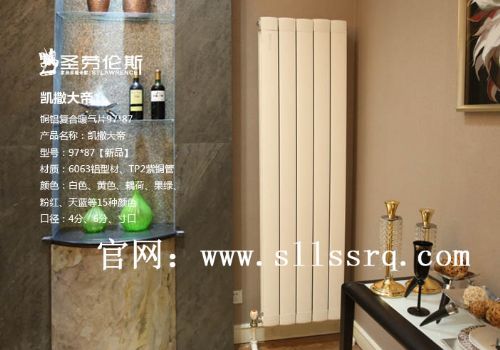As the temperature gradually rises, the warming up of the heating season has come. Many people think that since the heating is stopped, the water in the heating should be let go, otherwise it is not good for radiators and pipes. Some people, however, hold the opposite view and feel that they should not release water but should maintain water. So, when the radiator is turned on, the water inside the radiator is good or is it well drained? Below is a summary of the experience of radiator manufacturer St. Lawrence.
At present, the radiators installed in users' homes are mostly steel radiators or copper-aluminum composite radiators. Because steel is easily oxidized and corroded, especially in humid environments, copper and aluminum materials are also susceptible to the effects of a complex environment. When warm water remains in most heating pipes, this situation increases the chance of the radiators being corroded. Because the heating water is treated specially, it is kept in the system to isolate the air from the inner wall of the pipeline and the inner wall of the radiator to prevent the system from being oxidized and corroded, thereby enhancing the corrosion resistance of the system and prolonging the service life. Therefore, at the end of the heating season, the heating system should be filled with water to ensure the safety and performance of the radiator.

So, how to maintain the radiator full of water? When the heating is stopped, if it is a centralized heating, it only needs to close the heating inlet and outlet valve in time to allow the interior of the heating system to be filled with water. If it is a family-independent heating, the user can perform more advanced maintenance on the heating system, and the heating and maintenance can be stopped. Partial or partial discharge of water, then refilling, warming operation, exhaust system gas, and finally stop the pump. During the entire non-heating period, users need to pay attention to regularly check whether the system needs to be filled with water and keep it full.
Since there is still excess water in the heating pipeline at the beginning of the shutdown, users who have the need for retrofitting heating should not modify the pipeline within a week or let go of the water inside. Otherwise, it may cause a water leakage accident, which not only causes a lot of trouble for the family, but also causes Will live normal lives with neighbors. However, in the near future, the heating group will conduct a one-month return visit and failure statistics for users who have problems in the warm season. Since not only the beginning of the heating season, there is a phenomenon of leakage of the radiators, and the water leakage phenomenon is likely to occur at the end of the heating season.
Radiator manufacturer St. Lawrence will finally tell everyone that for most users, the radiator should be kept as it is before it is stopped, and it should not be changed or dismantled. If there is a need for modification, a professional radiator installation team can be found to give it to the construction.



